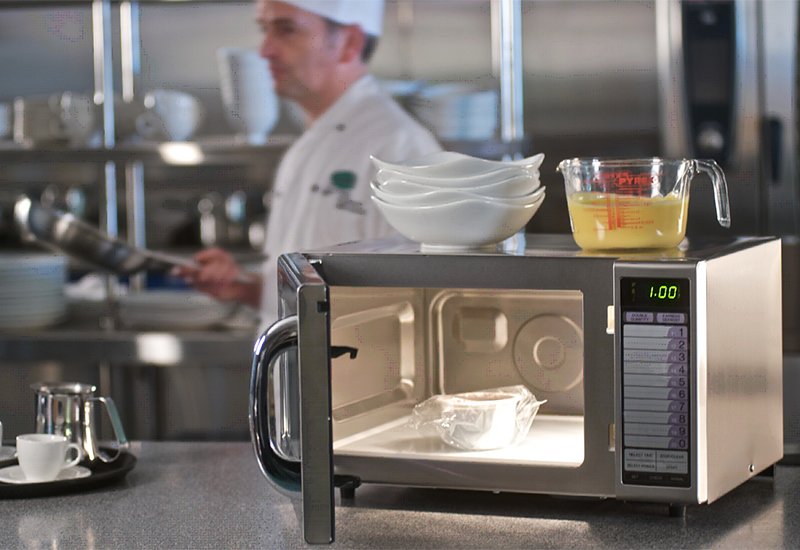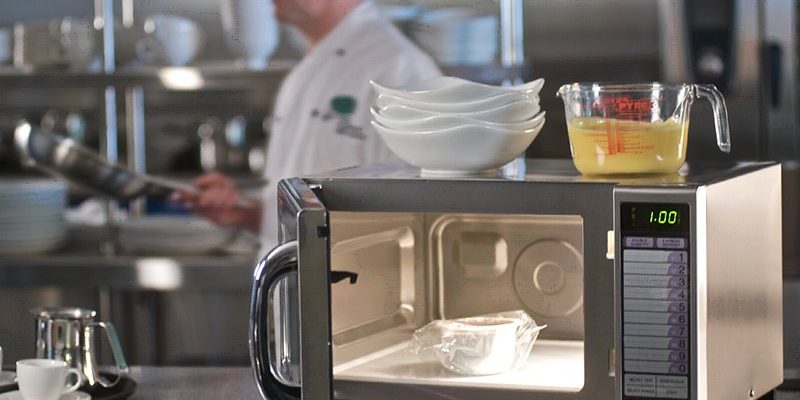
Imagine buying a Sharp microwave—the kind that promises to zap your leftovers to perfection with just a few buttons. It’s exciting, right? But then, what happens if it suddenly stops heating, or the door latch gets stuck? This is where the Sharp microwaves warranty steps in, like a safety net underneath your kitchen investment. Think of it as a friendly promise from Sharp that they’ll back up your microwave if things go sideways under normal use.
You might be wondering exactly what this warranty covers, how long it lasts, and what you need to do if something goes wrong. Let me explain it all—slow and clear—so you feel confident about your microwave’s protection and know what to expect if you ever need to call it in.
Understanding the Basics of the Sharp Microwaves Warranty
Here’s the thing: a warranty is essentially Sharp’s way of saying, “We stand behind this product.” For most Sharp microwaves, the warranty typically includes coverage for defects in materials or workmanship. That means if there’s a problem caused by how the microwave was made or the materials used, Sharp will fix or replace it, usually free of charge.
But what about other issues like accidental damage or wear and tear? Usually, these aren’t covered. The warranty focuses on unexpected breakdowns, not on things like dents from dropping the microwave or cracked glass from an accident. So it’s a bit like a checklist for what they’ll fix versus what they won’t.
In most cases, Sharp offers a limited warranty on their microwaves, often lasting about one year from the date of purchase. This might sound short, but it’s pretty standard in the appliance world. It covers the core mechanical and electrical parts, so if your microwave’s motor stops turning or the magnetron (the part that generates heat) fails, you’re in luck.
What Specific Parts Does the Warranty Cover?
Let’s get a bit more detailed. Within that one-year warranty window, Sharp typically covers parts and labor related to manufacturing defects. That includes:
- Magnetron – the heart of the microwave that produces heat.
- Control panel and electronics – so if the buttons or display stop working, that’s covered.
- Turntable motor – ensuring your food rotates evenly during cooking.
- Door assembly – if the latch or hinges fail under normal use.
Think of it as the warranty focusing on the crucial parts that directly affect whether your microwave heats your food properly and safely. If these components fail, Sharp’s warranty usually handles the cost to repair or replace them.
What Isn’t Covered by the Sharp Microwave Warranty?
Now, let’s talk about what you probably don’t want to hear but need to know. The warranty doesn’t cover:
- Accidental damage – dropping the microwave, spills inside, or impacts.
- Misuse or improper installation – like using the wrong power source or blocking ventilation.
- Normal wear and tear – scratched surfaces, faded buttons, or worn-out door seals.
- Consumables – including things like batteries if your microwave remote has one, or light bulbs inside the unit.
So, if your microwave’s display flickers because of a battery running low, that’s on you. Similarly, if you try to use a universal remote to sync with your Sharp microwave and accidentally cause errors, Sharp won’t foot the bill for troubleshooting or repairs related to that.
How to Make a Warranty Claim on Your Sharp Microwave
Honestly, making a warranty claim isn’t as scary as it sounds, but it does involve a few steps. First, you’ll want to find your original purchase receipt. This is proof of purchase and the date you bought it, which is crucial because the warranty only lasts for a specific time.
Next, contact Sharp’s customer service. You can usually do this via phone or their website. They’ll ask you to describe the problem in as much detail as possible. Be prepared to mention things like:
- The model and serial number of your microwave.
- What exactly isn’t working (e.g., “microwave stops heating,” “turntable won’t rotate”).
- Any troubleshooting you’ve already tried, like resetting or unplugging the machine.
From there, Sharp may send a technician to inspect the unit, or they might ask you to bring it to an authorized repair center. If the problem’s covered under warranty, they’ll usually take care of the repair or replacement at no cost. If not, they should provide a clear explanation.
Extended Warranties and Additional Coverage Options
You might be thinking, “One year? That doesn’t feel like enough.” And you’re not alone. Many people opt for extended warranties or service plans either at the point of sale or later.
These plans typically cover a longer period—sometimes up to three or five years—and occasionally include extra perks like free repairs for accidental damage or priority customer support. But here’s the catch: extended warranties often cost extra, and they’re sold through third parties or even Sharp directly.
If you’re someone who uses your microwave daily or relies on it heavily, an extended warranty might give you peace of mind. Just read the fine print carefully, so you know exactly what’s covered beyond the standard warranty.
Why Understanding Your Warranty Matters
You might be wondering why anyone would dig so deep into warranty details. Well, here’s the thing: knowing what your Sharp microwave warranty covers can save you money and frustration.
Imagine your microwave stops heating mid-cook, and you spend days troubleshooting, trying resets, or fiddling with the control panel. If you know your warranty covers these parts, you can skip the hassle of DIY fixes and get professional help faster.
Plus, understanding the limits helps you avoid surprises. Like, if you accidentally damage the microwave trying to sync a universal remote or changing batteries incorrectly, you know that’s on you, not Sharp. That clarity can steer you toward safer use and more cautious troubleshooting.
Comparing Sharp’s Warranty to Other Brands
Just for perspective, Sharp’s one-year limited warranty is pretty standard when stacked against other microwave brands. Brands like Panasonic, GE, or Samsung often offer similar coverage periods and terms.
Some competitors include longer warranties on certain high-end models, but generally, the focus is on parts and workmanship within the first year. Most brands exclude accidental damage and wear and tear from their warranties, so Sharp isn’t doing anything unusual here.
If you’re debating between a universal remote versus the Sharp-brand remote for your microwave, keep in mind that warranty coverage often extends only to issues caused by the original equipment. Using third-party accessories sometimes voids warranty protection, so sticking with Sharp’s official remotes or accessories usually keeps you in the safe zone.
Taking Care of Your Microwave to Keep the Warranty Valid
The warranty looks out for manufacturing defects, but you still have to do your part. Keeping the microwave clean, avoiding slamming the door, and using it according to Sharp’s instructions all help keep things running smoothly and your warranty in good standing.
For example, never try to remove or repair parts yourself unless you’re a qualified technician. Opening the microwave casing or messing with the electronics can void your warranty. Also, if your microwave has a remote control that uses batteries, make sure to replace those with the right kind to avoid leaks or damage.
Taking these small steps is like giving your microwave a little TLC so it doesn’t fall out of warranty coverage prematurely. It’s not just about avoiding problems—it’s about making sure Sharp’s protective promise remains valid if you ever need it.
In the end, the Sharp microwaves warranty is a helpful safety net, designed to protect you from unexpected defects without complicating normal, responsible use. Knowing the details gives you the power to use your microwave confidently—and when things go wrong, to get prompt, professional help.
So next time you’re heating up that late-night snack, remember, your Sharp microwave’s warranty is quietly working behind the scenes, ready to step in if needed. And now that you know exactly what it covers, you’re a step ahead in keeping your kitchen running smoothly.
